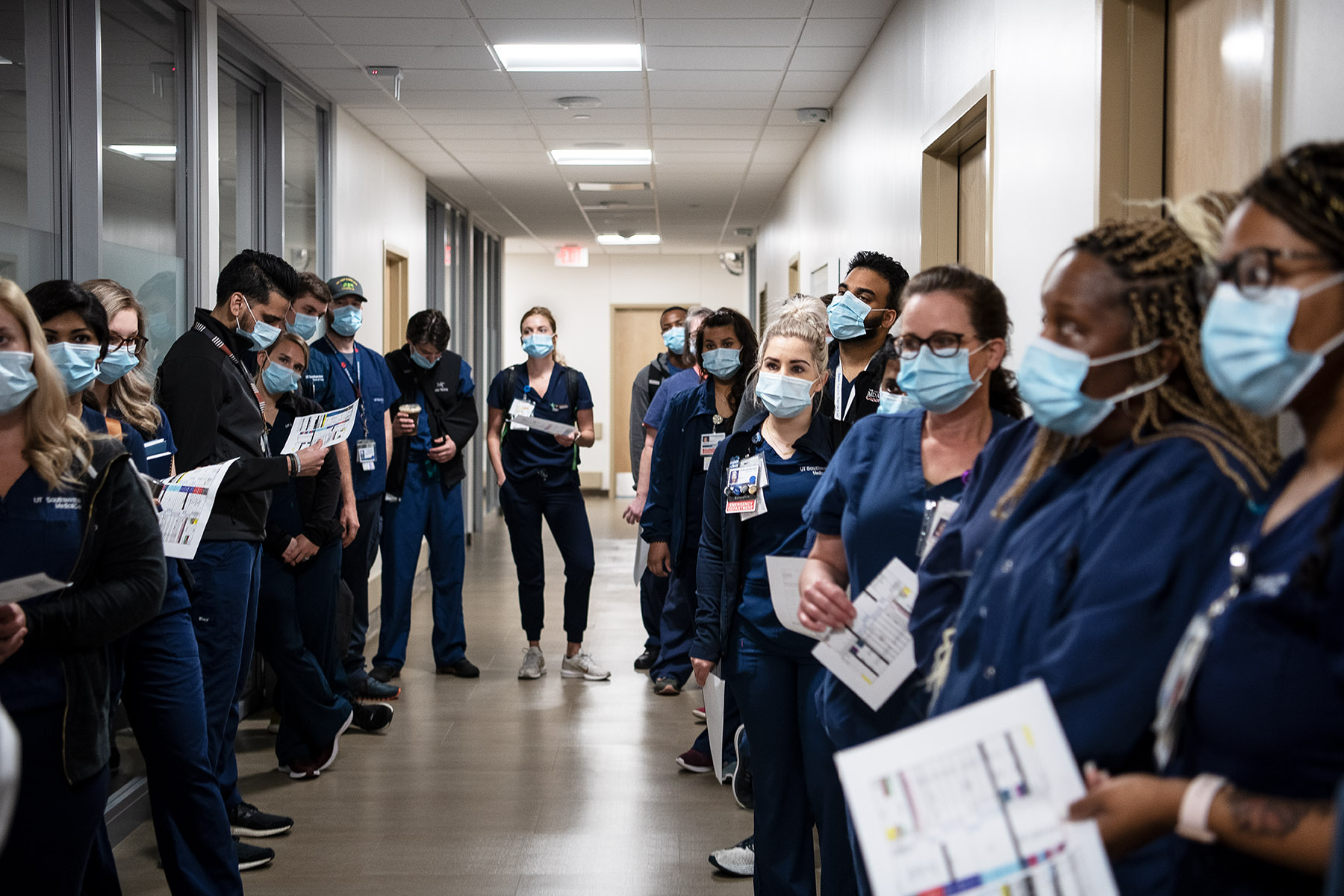The White House believes Texas “must intensify” its efforts in controlling the coronavirus and has highlighted Dallas-Fort Worth as the state’s largest metropolitan area in the worst shape. And a recent, sustained increase in hospitalizations appear to back up its fears.
The Center for Public Integrity, a nonprofit journalism outfit based in D.C., again obtained reports the White House’s coronavirus task force sends to each state’s governor every week.
Just as in July near the previous peak of the pandemic, the White House advised the state to dial it back. The Dallas-Fort Worth-Arlington MSA is among 50 in Texas that are listed as being in the “red zone.” States fall into that zone when they record more than 100 new infections per 100,000 residents in the prior week. Dallas, Tarrant, Collin, and Denton counties are all considered to be hot spots. Tarrant and Dallas trailed only El Paso County for the most new cases over the last three weeks.
The verbiage in the report is strong: “The silent community spread that precedes and continues to drive these surges can only be identified and interrupted through proactive, focused testing for both the identification of asymptomatic and pre-symptomatic individuals. This must be combined with significant behavior change of all Americans.”
“Stop going into restaurants, certainly stop going to any bar, bar-slash-restaurant-turned-bar, sure as heck stop gathering for those family gatherings,” said Dr. Mark Casanova, the president of the Dallas County Medical Society. “I think that’s where we’ve had our knees taken out from under us is those family gatherings and friend gatherings. Enough of those people do that on enough of a scale and you see exactly what we’re seeing in viral transmission.”
At Tuesday’s Dallas County Commissioners Court meeting, County Judge Clay Jenkins said that Parkland Hospital is seeing a surprising increase in asymptomatic positivity among patients seeking care for non-COVID related procedures. About 12 percent of that population—one in eight—are testing positive without showing symptoms. It highlights the importance of wearing masks and avoiding crowds, which will help avoid exposure.
“The number was so high that (Parkland CEO) Fred Cerise asked them to run it again, he couldn’t believe it,” Jenkins said.
Dallas County’s provisional seven-day average of new infections is now up to 1,405, which is about 53 new cases per 100,000 residents. It has increased 138 percent since the week before Halloween, when the county averaged 588 new cases. Hospital occupancy has improved in Dallas County, falling to 88.2 percent from last week’s 91.4 percent, according to data hospitals provided to the North Central Texas Trauma Regional Advisory Council (or NCTTRAC). But COVID patient data is going the wrong way.
Tuesday marked five straight days where at least 15 percent of North Texas hospital beds were occupied by patients with COVID-19, according Texas Department of State Health Services data. Abbott has rolled back his reopening plan at six regions in the state—El Paso, the Panhandle, and Central Texas near Waco—because hospitalizations topped the 15 percent mark for a week straight. Dallas-Fort Worth appears to be on its way. If it does, businesses that were allowed to operate at 75 percent must roll back capacity to 50 percent. The order also pauses elective surgeries and closes bars in counties that chose to open them. The state also includes psychiatric beds, which the NCTTRAC does not. Considering only traditional hospital bed capacity, we’ve been at the marker for more than a week.
The NCTTRAC data show that COVID patients account for a quarter of the census of Tarrant County hospitals. In the 19 counties that make up our Trauma Region E, 20.2 percent of hospital beds are occupied by COVID patients.
That White House report calls for weekly testing of individuals who are coming into contact with other people routinely: teachers, students, public employees, hospital personnel, essential workers, and large private sector employers. Yet, CDC data show testing volume has decreased by nearly 19 percent in the past week. Testing volume is now about 1,958 per 100,000 residents, far below the peak in July, when it hovered near 5,000 per 100,000.
The good news seems coupled with bad. Hospitals have shaved half a day off average stays for COVID patients, said Steve Love, the president of the Dallas Fort Worth Hospital Council.
“The front door has got even more patients coming in, so it more than offsets that slight decrease in length of stay,” he added.
Meanwhile, the UNT Health Science Center’s pre-Thanksgiving warning was more dire: “If the current growth rate in the number of new daily COVID-19 related admissions remain unchanged, either of the two counties may reach maximum capacity in the next 30 days.”





